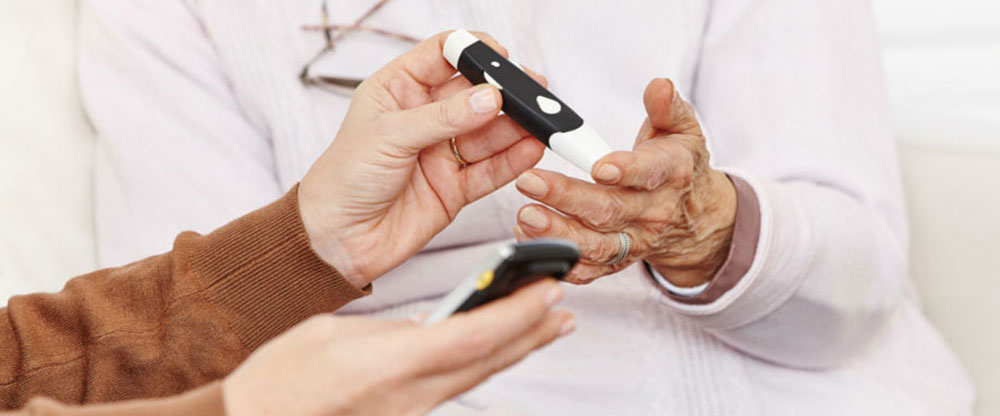Diabetics, diagnosed as someone with extraordinarily high blood sugars, sometimes experience quite the opposite. And when they do, it is important to treat low blood sugar conditions promptly.
Hypoglycemia can happen when diabetics take too much insulin, don’t consume enough calories or expend more energy than planned.
A blood glucose level of less than 70 mg/dl is generally considered low, according to the Joslin Diabetes Center. Severely low blood sugar levels can lead to a coma or could be fatal.

If detected quickly, low blood sugars can be treated at home without having to make a trip to the doctor or emergency room. That is why it is important for family members, friends or caretakers to recognize the signs of hypoglycemia and know how to respond.Many diabetics “get a certain feeling” when their blood sugars are dropping. They are able to consume some extra carbohydrates and protein to raise their levels. However, blood sugars sometimes drop suddenly – and diabetics are in distress without realizing it.
Common signs of hypoglycemia are shakiness, dizziness, difficulty speaking, confusion, fatigue, sweating and anxiety. The behavior can be similar to someone who has consumed too much alcohol.
If you notice a diabetic experiencing these symptoms, check their level with a blood sugar monitor. If the diabetic is unresponsive or you are unable to administer any treatment, you should immediately call 911 and get the patient to a hospital as soon as possible.
If the reading is 70 or lower and the person is conscious, doctors recommend following the 15-15 Rule of first aid:
Eat or drink 15 grams of a carbohydrate (which metabolizes into sugar).
Four to six ounces of fruit juice or regular soda (Coke, Mountain Dew) will infuse the system with instant sugar. Don’t overdo it. Just a few ounces will halt a blood sugar drop. Make certain the person is taking small sips from a straw or cup – to prevent choking. A teaspoon of sugar or candy such as Gummy Bears or Livesavers work, too. However, make certain the patient is able to chew adequately. Again, you want to prevent blocking their airway.
Wait 15 minutes and recheck the blood sugar level. If the level remains lower than 70 mg/dl, repeat the consumption of 15 grams of carbohydrate.
You should see signs of recovery fairly quickly, especially if the diabetic has consumed a soft drink or fruit juice. However, you should keep a close watch and not let the person walk, drive or climb stairs until he or she appears stable.
Once the blood sugar reaches 70 mg/dl, add some protein.
While a sugary substance addresses the immediate health risk, sodas and juices do not sustain blood sugar levels for very long. Diabetics need to eat a healthy snack that includes proteins such as peanut butter or cheese. You may want to move up the next meal an hour to help the diabetic maintain the blood sugar level.
Inject glucagon if necessary.
Many diabetics carry a glucagon injection device, in case of an emergency. This can be used if the diabetic is unresponsive. It should be injected into the skin – similar to an insulin shot. Usually family members, friends or caretakers are trained to administer this emergency treatment. While this provides immediate sugar to the blood stream, patients report some side effects such as vomiting.
Follow up with a physician.
While not every hypoglycemia incident needs to be reported, diabetics should contact their doctor if they happen more frequently – especially at the same time of day. Sometimes, they need to adjust insulin dosages or other medication.
When first diagnosed with diabetes, patients are trained how to treat hypoglycemic episodes. They often keep candy or other snacks with them in case they begin to notice signs of low blood sugar.
If they are in control, let them guide you through their treatment. Otherwise, get help from a healthcare professional as soon as possible.

